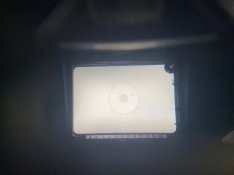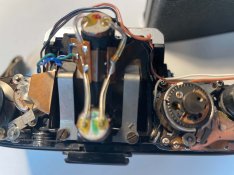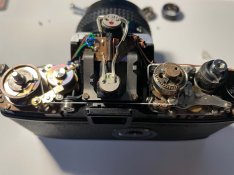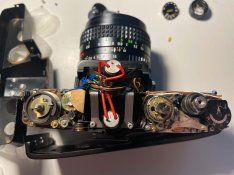cliveh does not endorse the use of light meters... he has the experience to know the proper exposure without them.
If Leica had meant for us to use light meters they would have built one in the M2 - not as an ugly add-on wart.
To the question: How does your light meter know how you are going to develop the film? At what dilution? Time? Temperature? Agitation? Printing on a Diffuser? Condenser? Point source? Your interpretation of the scene?
I would give a long-winded answer:
Fresh film has an ISO/ASA/DIN speed. Manufacturer tells you this speed. It is the film's real speed (unless data sheet says otherwise). If you plan to use the film normally, set that value for the Exposure Index (EI) on your meter's calculator dial (e.g, where the setting is labeled "Film Speed", "Exposure Index", ASA/ISO/DIN).
When you intend to use the film in your own special way, then choose an EI to fit your personal answers to the questions: "how you are going to develop the film? At what dilution? Time? Temperature? Agitation? Printing on a Diffuser? Condenser? Point source?"
Some developer data sheets will tell you the EI to expect. I remember Panatomic-X (normally 32) is to be exposed at EI 80 when developing in Kodak Reversal Processing Kit. So the developer can make a difference. If you don't test yourself, you can ask around here to get a good ballpark EI to use for a different developer. You may want to push the film as far as you can, go for it.
To the final part of cliveh's question "Your interpretation of the scene?" Here you take a meter reading and decide whether to use the reading as-is or shift the emphasis. You can use Zone System to take a spotmeter reading of a part of the subject and place it on an appropriate Zone, e.g., a shadow reading placed on Zone III. Or you can follow any folklore about how much exposure compensation to give a backlit scene, "black cat in a coal mine" or other special case.
As a final thought, many times you will read where people suggest EI of half box speed or 2/3 stop less than box speed. "To get better shadow detail" and/or "To agree with Zone System". I often mention both reasons but only recently started thinking about them separately and independently. Better shadow detail is a good thing and I like to go for it. And Zone System speed can be proven to be 2/3 stop less than box speed. I like to use Zone System metering techniques. Also add into the mix that flare will help shadows. In practice, I set my most accurate meter to 2/3 stop towards greater exposure than tested speed and I use that whether calculating by spotmeter with Zone System placement or by incident meter. When it gets darker and I want to handhold, I consider whether I want to switch to the film's rated speed or maybe even 2/3 stop the other way towards decreased exposure. I like to get good prints, so I usually hold it there. You can push further with increased development, but I think "nothing" of a 2/3 stop push and will develop that roll of film without any change in plan.








